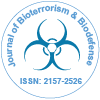Nuestro grupo organiza más de 3000 Series de conferencias Eventos cada año en EE. UU., Europa y América. Asia con el apoyo de 1.000 sociedades científicas más y publica más de 700 Acceso abierto Revistas que contienen más de 50.000 personalidades eminentes, científicos de renombre como miembros del consejo editorial.
Revistas de acceso abierto que ganan más lectores y citas
700 revistas y 15 000 000 de lectores Cada revista obtiene más de 25 000 lectores
Indexado en
- Índice de fuentes CAS (CASSI)
- Índice Copérnico
- Google Académico
- sherpa romeo
- Abrir puerta J
- Revista GenámicaBuscar
- Claves Académicas
- TOC de revistas
- InvestigaciónBiblia
- Infraestructura Nacional del Conocimiento de China (CNKI)
- Directorio de publicaciones periódicas de Ulrich
- Búsqueda de referencia
- Universidad Hamdard
- EBSCO AZ
- OCLC-WorldCat
- Catálogo en línea SWB
- publones
- Fundación de Ginebra para la educación y la investigación médicas
- Pub Europeo
- ICMJE
Enlaces útiles
Revistas de acceso abierto
Comparte esta página
Abstracto
Security in a Goldfish Bowl: the NSABBs Exacerbation of the Bioterrorism Threat
Brian P. Hanley
If our potential adversaries are understood, publicity drawing the attention of bioterrorists to plausible bioweapons is the primary contribution the NSABB makes by censorship recommendations. Attempting censorship by attracting the entire world’s attention to information of concern is obviously counterproductive.
It is equally problematic to curb research in an attempt to prevent those outside our borders from understanding how to create bioweapons. That horse is, “Out of the barn and in the next county”. Locking the barn door is not going to change this. Proliferation of molecular biology, vaccine and other knowledge across the world has already taken place. Thus, the best course is to make sure that we understand what human bioterrorists could do as well as we understand what nature can do. To date, nature has been the worst bioterrorist, but in theory human engineering can be worse.
Medicine is biodefense. The focus needs to be on response capability and surveillance, just as in any other infectious disease control. Attempting to track, outwit or contain terrorists should be left to clandestine intelligence services that are equipped to understand and interdict them. Perhaps it is true that such capabilities in our clandestine services are poorly developed or directed. The remedy for that, though, is to work to improve matters by prodding politicians rather than operate independently in attempts at interdiction that may be counterproductive. Science, law enforcement, the military and intelligence services need to work together and understand each other’s appropriate roles.
Revistas por tema
- Agricultura y acuicultura
- Alimentación y Nutrición
- Bioinformática y biología de sistemas
- Bioquímica
- Ciencia de los Materiales
- Ciencia general
- Ciencias Ambientales
- Ciencias Clínicas
- Ciencias farmacéuticas
- Ciencias Médicas
- Ciencias Sociales y Políticas
- Ciencias Veterinarias
- Enfermería y atención sanitaria
- Física
- Genética y biología molecular
- Geología y Ciencias de la Tierra
- Ingeniería
- Inmunología y Microbiología
- Química
Revistas clínicas y médicas
- Anestesiología
- Biología Molecular
- Cardiología
- Cirugía
- Cuidado de la salud
- Dermatología
- Diabetes y Endocrinología
- Enfermedades infecciosas
- Enfermería
- Gastroenterología
- Genética
- Inmunología
- Investigación clínica
- Medicamento
- Microbiología
- Neurología
- Odontología
- Oftalmología
- Oncología
- Pediatría
- Toxicología

 English
English  Chinese
Chinese  Russian
Russian  German
German  French
French  Japanese
Japanese  Portuguese
Portuguese  Hindi
Hindi